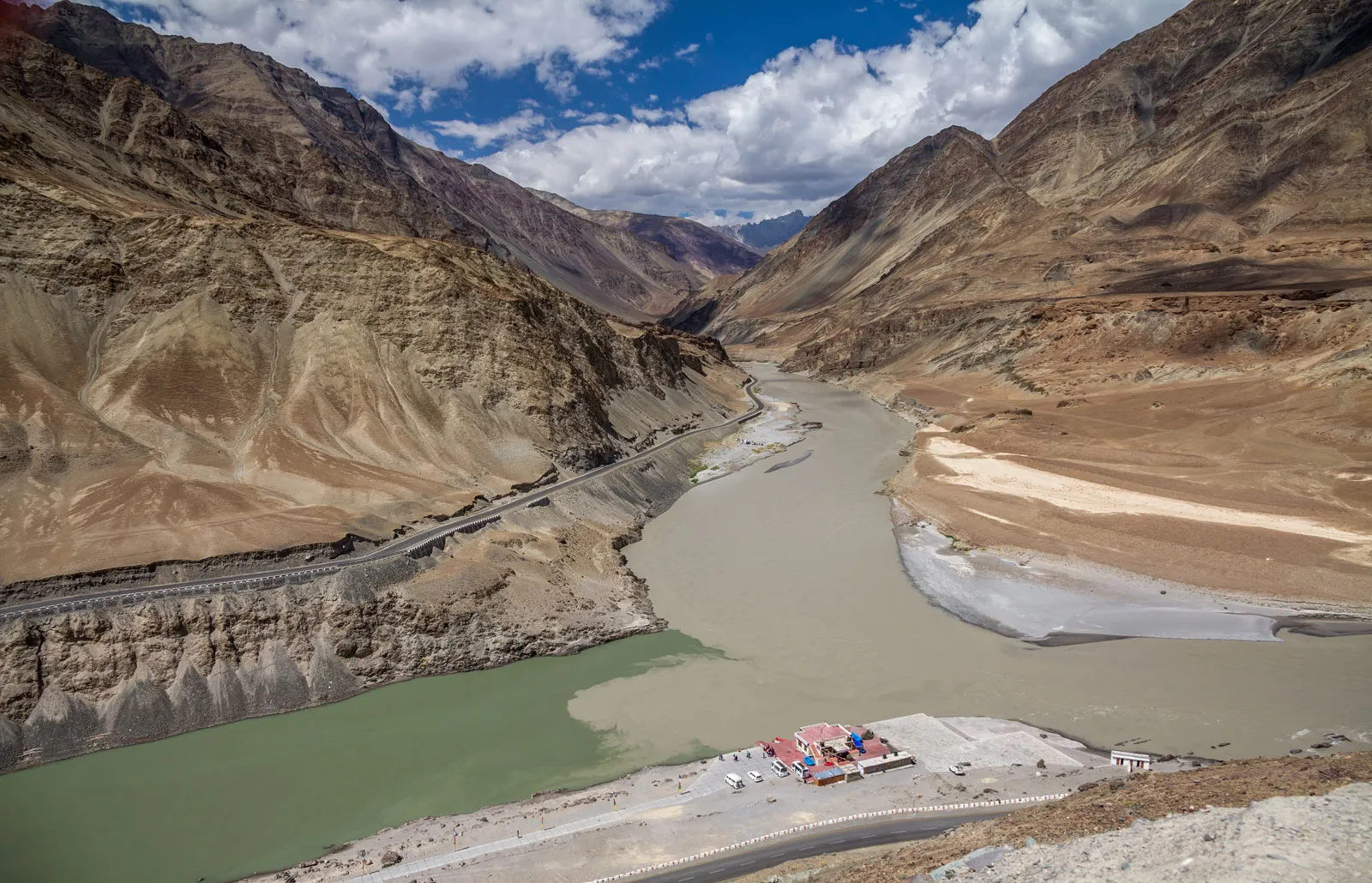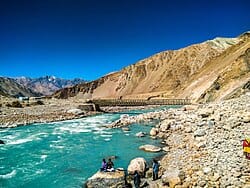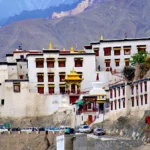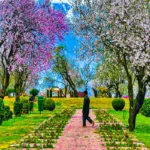Table of Contents
Toggle- Overview
- The Thiksey Monastery History and Origin
- An Overview Of Thiksey Monastery’s Architecture
- Religious and Cultural Importance of Thiksey Monastery
- Preserving Tibetan Buddhist Culture
- Essential Information for Travelers: Visiting Thiksey Monastery
- Experiences and Activities Around Thiksey Monastery
- What’s so special about the Thiksey Monastery?
- Conclusion: A Journey to Spiritual Serenity
- How to book Ladakh tour online?
- People Also Ask
- What is Thiksey Monastery known for?
- Where is Thiksey Monastery located?
- What is the best time to visit Thiksey Monastery?
- What is the history of Thiksey Monastery?
- How do I reach Thiksey Monastery?
- Is there an entry fee for Thiksey Monastery?
- What should I wear when visiting Thiksey Monastery?
- Can I take photos at Thiksey Monastery?
- What are the festivals celebrated at Thiksey Monastery?
- What can I see at Thiksey Monastery?
- How long should I spend at Thiksey Monastery?
- What is the significance of the Maitreya Buddha statue at Thiksey?
- Is Thiksey Monastery accessible for people with disabilities?
- Are there any accommodations near Thiksey Monastery?
- What is the architectural style of Thiksey Monastery?
- Are there any nearby attractions to Thiksey Monastery?
- What is the role of Thiksey Monastery in Tibetan Buddhism?
- What can visitors expect at Thiksey Monastery?
- What languages are spoken at Thiksey Monastery?
- Are there guided tours available at Thiksey Monastery?
- What should I bring when visiting Thiksey Monastery?
- What are the unique features of Thiksey Monastery’s architecture?
- How far is Thiksey Monastery from Leh?
- What spiritual practices are followed at Thiksey Monastery?
- Are there any shops or markets near Thiksey Monastery?
- What makes Thiksey Monastery a must-visit in Ladakh?
- Can I participate in prayers or ceremonies at Thiksey Monastery?
- Inquiry Form
Overview
Thiksey Monastery is one of the most recognizable and stunning Buddhist monasteries located in the snowy region of Ladakh. It is a sprawling complex of sacred shrines, towering stupas, and monk residences that sit on a hilltop in the Indus Valley. This offers breathtaking views of the region which makes it an awe-inspiring site. It has also become one of the must visit areas for tourists due to the rich culture, architecture, history, and active Buddhist practices of the region.
In this guide, we will add tips for planning a visit along with everything else that is important when learning about Thiksey Monastery. Through this blog, I hope to provide useful information to spiritual seekers, architecture enthusiasts, or any other person who wishes to satisfy their adventurous side in the secluded regions of India.



The Thiksey Monastery History and Origin
Let us go back in time to the 15th Century when Thiksey Monastery was constructed in 1430 by Sherab Zangpo, a student of Tsongkhapa, the Tibetan scholar who established the Gelug Sect of Buddhism. The founding of the monastery was with the intent to sustain and disseminate Buddhist teachings in the region of Ladakh. Over years, Thiksey has developed into one of the major Buddhist monasteries in Ladakh possessing nearly 100 monks and provides the region with spiritual training, community services, and education.
As far as the history of Thiksey goes, it has suffered from natural calamity, invasions, destruction, and even neglect of the facility. However, under the efforts of the succeeding lamas, the support of the community, and the enduring will of the people, the monastery has managed to grow and kept its position as a place of culture and spirituality. In addition, Thiksey played a crucial role in the development of Buddhist traditions of Ladakh with one of the oldest centers for Buddhism during the 17th century when it became one of the major centers for Buddhist rituals and teachings.
An Overview Of Thiksey Monastery’s Architecture
Apart from serving as a spiritual center, Thiksey Monastery is breathtaking in terms of its architectural design. It is built on a hill in steps or levels where each level has a shrine, prayer hall, and monk’s quarters. Visitors will observe that the design of Thiksey Monastery is strikingly similar to the famous Potala Palace in Lhasa, Tibet. Like other structures of the region, the design is meant to reflect the grand architecture of Tibetan palaces.
The Maitreya Buddha Statue: A Towering Marvel
Thiksey Monastery is renowned for the massive statue of Maitreya Buddha or “Future Buddha”and it is one of it’s most distinctive highlights. The statue which is located in the Maitreya Temple on the second floor of the monastery, towers at an incredible height of 15 meters. It is hard not to notice the beauty of the statue as it overlooks the entire complex of the monastery and the surrounding valley. The statue, a fine example of Buddhist art, is richly clad with bright colors and intricate details.
Mitreya Temple is one of the most significant Buddhist temples in the region, and it features various other smaller shrines which tourists can visit and appreciate the amazing craftsmanship of the murals and paintings depicting the life of Buddha. The monks and other devotees have made various offerings and some smaller statues of Buddhist deities are placed along with them. The statue of Maitreya Buddha is an artistic wonder and aids aligned with hope because he is the predicted buddha who is supposed to come and is eluded to bring enlightenment to the world.
The Monastic Complex: A Multi-Level Exploration
Thiksey Monastery is a multi-level structure with each floor offering something unique. There are mixed residential blocks, shrine halls, and some smaller prayer places around the Indus river and mountain ranges for sightseeing. Over time, they also expand their perspective scope during climbing the mountains.
In the case of “the Upper Floors”, these are the floors with the most notable temples and shrines. Admired and visited by many, the Maitreya Temple has the primary focus claim on its second level, while other temples featuring various Buddhist figures also surround it. The top floor boast strings wide open on all flat sides which forms an amazing spot to view the entire floating of other peaks.
The Lower Floors: On the lower floors, one can find the monks’ living quarters along with the daily prayer halls. Guests have the chance to witness the monks coming through various rituals, chanting mantras, and meditating. It is calm and allows for reflection, deepening a sense of immersion into Buddhist practices.
The Courtyard and Surrounding Areas: The monastery is located in the middle of a splendid courtyard where the monks come together for communal activities and various rituals. This area also features colorful prayer flags, statues of deities, and detailed Tibetan carvings. Surrounding regions include barley fields, apricot orchards, and small villages, softening the harshness of the mountains.
Religious and Cultural Importance of Thiksey Monastery
Thiksey Monastery stands out as an active focal point for practicing Tibetian Buddhism in Ladakh. It is a place for both prayer and the education of younger monks who travel from different parts of Ladakh and even further afield. Monastic education involves learning the principles of Buddhism, meditation, and other related Tibetan scripture teachings.
Sacred Rituals and Ceremonies at Thiksey
Throughout the year, both religious locals and tourists congregate at the Thiksey monastery to take part in its numerous performances, rituals, and ceremonies. Like most Buddhist monasteries, this one is no different in having a religious calendar brimming with festivities correlated to the lunar calendar… and this one is no exception. Here are some of the most notable performances held through the year:
– Gustor Festival: One of the most celebrated events at the monastery, this festival takes place in December and is marked by fervent celebrations. This festival has countless traditional Cham dances and pas de dux performed by masked dancers celebrating the victory of good over evil. It is a spiritually charged event, as these rituals are accompanied with prayers and offerings.
– The Ladakh Festival: This event is celebrated throughout the entire month of September, marking it as one of the best times to visit the region. This is an opportunity for tourists to witness the culture of the region, as it contains multiple cultural performances and is centered around ladakhi music and dance.
Preserving Tibetan Buddhist Culture
Thiksey is also important in the conserving Tibetan Buddhist culture and art. The monastery holds a considerable number of ancient manuscripts, precious religious artifacts, Buddhist thangkas. It has contributed greatly in the preservation of Tibetan Buddhism’s culture and practices, especially with the political and cultural invasions in Tibet.
Essential Information for Travelers: Visiting Thiksey Monastery
Instead of a purely religious site, Thiksey Monastery is also a point of interest for people seeking the cultural and natural beauty of Ladakh. For those intending to visit Thiksey, here is some information you need to help you plan your visit.
Most Appropriate Period for visiting Thiksey Monastery
The most appropriate period in the year one can visit Thiksey Monastery is during the summer (June to September) when the weather is warm and friendly. During this season, Ladakh has clear skies and moderate temperatures which is ideal for sightseeing and outdoor activities. The winter season (October to March) is equally unforgiving with heavy snowfall and sub-zero temperatures which makes travel extremely challenging.
Directions to Thiksey Monastery
The most important town located nearby Thiksey Monastery is Leh which has flights available from and to different parts of India. Subsequently, you can take a cab, bus, or use your own vehicle to get to Thiksey. The bus journey that follows the Indus River is visually stunning, and takes approximately half an hour. The monastery is conveniently located just off the Leh-Manali Highway which makes it easy to get to.
Entry Fees and Visiting Times
Thiksey Monastery charges a small fee from tourists, which is invaluable towards the upkeep of the monastery and its premises. The monastery can be visited all days of the week from 7 am till 6 in the evening. It is better to come really early in the morning or later in the evening to avoid crowds and enjoy tranquility.
What to Wear and Bring
As Thiksey Monastery is a place of spiritual significance, it is important to observe clothing etiquette. Women should wear dresses or skirts that are at least knee length and tops with straps that cover the shoulders. Men are discouraged from putting on shorts. It is prudent to wear comfortable walking shoes because the monastery does involve some uphill walking and stairs. If you are visiting in summer, make sure to bring a water bottle.
Photography and Etiquette
In most parts of the monastery, photography can be done, but when it comes to taking pictures of the monks in ritualistic settings, it is necessary to ask for permission. These photos will usually be taken in spaces where monks are performing rituals. Also, remember to be quiet when you are in places of worship. Loud talking, smoking and other behavior which might be considered as inappropriate tend to be discouraged.
Experiences and Activities Around Thiksey Monastery
Thiksey also serves as a center for venturing into the scenic parts of Ladakh. Aside from spiritual exploration, it is an excellent base for discovering the beauty of Ladakh. There are plenty of activities and experiences for travelers to enjoy around the monastery.
Trekking and Nature Walks: Exploring the areas around Thiksey can be more than just spiritually enlightening, the region offers picturesque nature trails. In addition, activities such as these provide you with the chance to view some of Ladakh’s beautiful terrains and landscapes which can even include visiting the Indus River and the neighboring valley.
Locate Leh: The city of Leh is a stone throw away from Thiksey and is home to Leh Palace, Shanti Stupa, and the renowned Leh Market. The city also provides a wonderful experience as it provides a blend of Indo-Tibetan culture.
What’s so special about the Thiksey Monastery?
A trip to Thiksey Monastery is not just bound to the sightseeing options rather it is one of the few chances to experience the deep and diverse spiritual roots of Ladakh. The monastery is blessed with the serenity that is needed in today’s fast paced life where one can reflect, meditate, and observe the ancient Tibetan Buddhism practices. The view of the huge Maitreya Buddha statue and the calmness of the monastery grounds ensures that Thiksey is indeed a heaven for all who wish to seek spirituality and beauty of nature in one place.
Conclusion: A Journey to Spiritual Serenity
Conclusively, Thiksey Monastery truly epitomizes the very culture and religion of Ladakh. Exquisite architectural work alongside captivating landscapes makes it a centre for Tibetan Buddhism. Whether it is mountaineering or spending time in silence, the monastery caters to all. Make sure to mark this gem on your list of places to visit in Ladakh since the experience is sure to outlast the trip.
How to book Ladakh tour online?
Contact Brown Chinar at +91 6005039532/+91 9906188874 or Email us at : Enquiry@brownchinarkashmir.com



People Also Ask
What is Thiksey Monastery known for?
Thiksey Monastery is renowned for its striking architecture, large Maitreya Buddha statue, and its significance in Tibetan Buddhism. Located in Ladakh, it serves as a cultural and spiritual hub, attracting both tourists and devotees.
Where is Thiksey Monastery located?
Thiksey Monastery is located in Ladakh, about 19 kilometers east of Leh, the capital of Ladakh, India. The monastery sits on a hilltop, offering panoramic views of the Indus Valley.
What is the best time to visit Thiksey Monastery?
The best time to visit Thiksey Monastery is between June and September when the weather in Ladakh is pleasant, with clear skies and moderate temperatures. Winter months are harsh and challenging for travel.
What is the history of Thiksey Monastery?
Thiksey Monastery was founded in 1430 by Sherab Zangpo, a disciple of the Tibetan Buddhist scholar Tsongkhapa. The monastery has a long history of religious education and cultural preservation, playing a pivotal role in Tibetan Buddhism in Ladakh.
How do I reach Thiksey Monastery?
Thiksey Monastery is accessible from Leh, which is well-connected by road and air. From Leh, you can hire a taxi, take a local bus, or rent a vehicle to reach the monastery in about 30 minutes.
Is there an entry fee for Thiksey Monastery?
Yes, there is a nominal entry fee for visiting Thiksey Monastery. The fee helps maintain the monastery and its grounds. It’s always best to check with the local authorities for updated fees.
What should I wear when visiting Thiksey Monastery?
When visiting Thiksey Monastery, it is essential to dress modestly. Women should cover their shoulders and knees, while men should avoid wearing shorts. Comfortable walking shoes are also recommended.
Can I take photos at Thiksey Monastery?
Photography is allowed in most parts of Thiksey Monastery, but it’s important to ask for permission, especially in areas where monks are performing rituals. Always respect local customs and practices while taking pictures.
What are the festivals celebrated at Thiksey Monastery?
Thiksey Monastery celebrates several important Buddhist festivals, including the Gustor Festival, which features traditional masked dances and religious rituals, and the Ladakh Festival, which showcases Ladakhi culture.
What can I see at Thiksey Monastery?
At Thiksey Monastery, visitors can admire the massive Maitreya Buddha statue, explore multiple prayer halls, visit the monks’ quarters, and enjoy panoramic views of the Indus Valley. The monastery is also adorned with beautiful murals, carvings, and Tibetan artifacts.
How long should I spend at Thiksey Monastery?
A visit to Thiksey Monastery typically takes around 1 to 2 hours. However, if you’re interested in exploring the surrounding areas or attending a prayer ceremony, you may want to allocate more time.
What is the significance of the Maitreya Buddha statue at Thiksey?
The Maitreya Buddha statue at Thiksey Monastery is one of the tallest statues in Ladakh, standing at 15 meters. It symbolizes hope and the coming of a future Buddha, and it’s a central figure in the monastery’s Maitreya Temple.
Is Thiksey Monastery accessible for people with disabilities?
The monastery is situated on a hilltop, and while it’s possible to visit the main areas, accessibility can be challenging for people with mobility issues due to the steps and uneven terrain. It’s recommended to plan accordingly or seek assistance.
Are there any accommodations near Thiksey Monastery?
Yes, there are several guesthouses, hotels, and homestays in Leh, which is about 19 kilometers away from Thiksey Monastery. Some of these accommodations offer scenic views and are popular with visitors heading to the monastery.
What is the architectural style of Thiksey Monastery?
Thiksey Monastery is built in traditional Tibetan Buddhist architecture. The monastery features vibrant red, white, and gold colors and has a multi-level design with several prayer halls, shrines, and temples. It bears a resemblance to the Potala Palace in Tibet.
Are there any nearby attractions to Thiksey Monastery?
Yes, nearby attractions include the Leh Palace, Shanti Stupa, Hemis Monastery, and the Indus River. All these sites are within a short distance of Thiksey and offer unique experiences for travelers.
What is the role of Thiksey Monastery in Tibetan Buddhism?
Thiksey Monastery is a vital center for the Gelug school of Tibetan Buddhism, providing a place of learning, spiritual development, and religious practice for monks and laypeople. It also plays a key role in preserving Tibetan Buddhist culture and teachings in Ladakh.
What can visitors expect at Thiksey Monastery?
Visitors can expect a peaceful and spiritual atmosphere at Thiksey Monastery. They can explore the beautiful architecture, attend religious ceremonies, interact with monks, and enjoy the serenity of the surrounding landscape.
What languages are spoken at Thiksey Monastery?
The primary language spoken at Thiksey Monastery is Ladakhi, which is closely related to Tibetan. However, many of the monks and locals also speak Hindi and English, especially in tourist areas.
Are there guided tours available at Thiksey Monastery?
Yes, guided tours are available for visitors who wish to learn more about the history, culture, and spiritual significance of Thiksey Monastery. It’s best to arrange a guide in advance or ask at your hotel in Leh.
What should I bring when visiting Thiksey Monastery?
Bring comfortable walking shoes, water, sunscreen, a camera (with permission for photos), and a hat to protect yourself from the sun. It’s also a good idea to carry a scarf or shawl to cover your shoulders if needed.
What are the unique features of Thiksey Monastery’s architecture?
Thiksey Monastery is known for its multi-level structure, resembling the Potala Palace. The monastery’s design incorporates large prayer halls, a massive Maitreya Buddha statue, and Tibetan-style artwork, including intricate murals and carvings.
How far is Thiksey Monastery from Leh?
Thiksey Monastery is located around 19 kilometers (about 12 miles) from Leh. It takes approximately 30 minutes to travel by car from Leh to the monastery.
What spiritual practices are followed at Thiksey Monastery?
Monks at Thiksey Monastery engage in a variety of Buddhist practices, including meditation, chanting mantras, and offering prayers. Visitors can witness these rituals during their visit, especially in the early mornings and late afternoons.
Are there any shops or markets near Thiksey Monastery?
There are small markets near Thiksey Monastery where you can purchase Buddhist artifacts, prayer wheels, thangkas, and souvenirs. Additionally, Leh’s main market has a variety of local shops selling handicrafts and Tibetan items.
What makes Thiksey Monastery a must-visit in Ladakh?
Thiksey Monastery is a must-visit for its combination of breathtaking architecture, cultural significance, stunning panoramic views, and the opportunity to experience Tibetan Buddhist traditions up close. It offers a serene and immersive experience for travelers.
Can I participate in prayers or ceremonies at Thiksey Monastery?
Visitors are welcome to observe prayers and ceremonies at Thiksey Monastery. However, participation is typically reserved for the monks and dedicated practitioners. It’s always respectful to inquire with the monks if you wish to participate in any spiritual practices.



